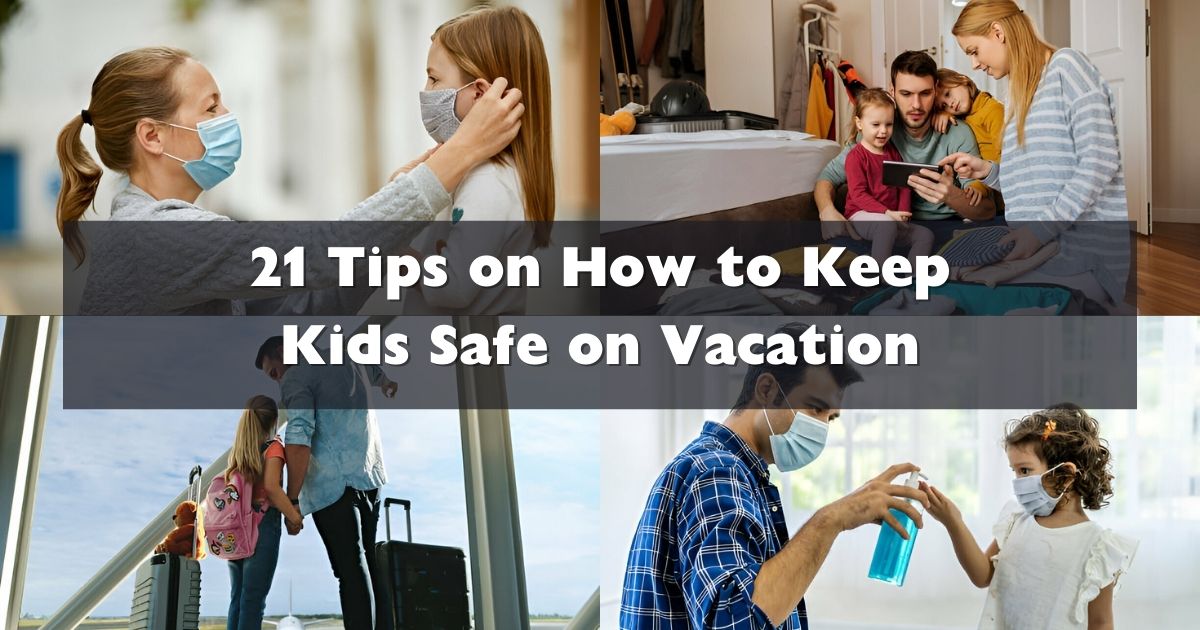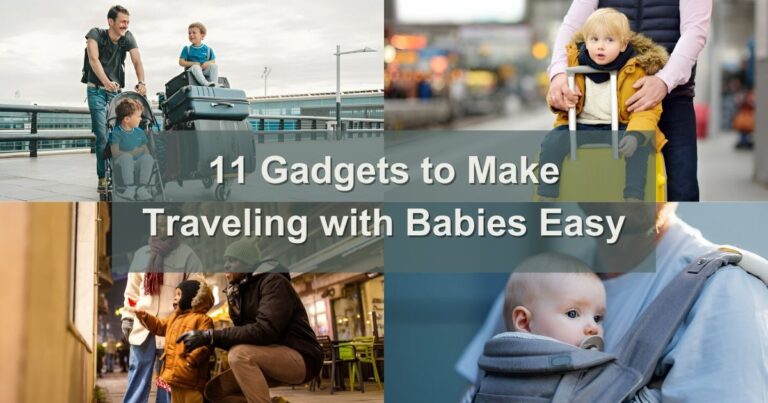21 Tips on How to Keep Kids Safe on Vacation
Vacations are an exciting time for families—a chance to step away from the daily grind and create lasting memories together. However, traveling with children comes with its unique challenges, especially when it comes to ensuring their safety. As exhilarating as a family trip may sound, parents must be mindful of various safety precautions to protect their little ones from potential risks. From pre-travel preparations to on-the-go vigilance, these 21 tips will equip you with practical insights to ensure a safe and stress-free vacation with your kids.
Introduction: Why Safety is Vital on Family Vacations
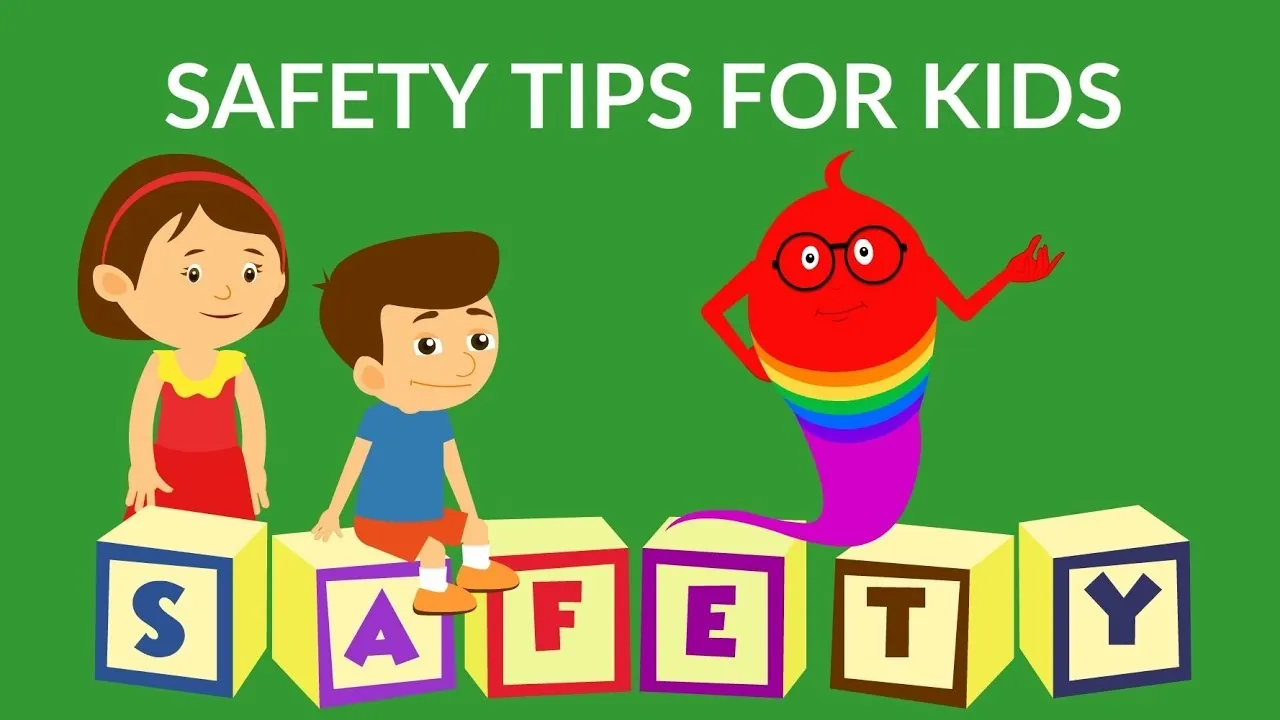
Traveling with kids is a balancing act that requires planning, patience, and proactivity. The allure of adventure often goes hand-in-hand with unforeseen risks, particularly when young children are involved. Whether you’re exploring bustling cities, lounging by the beach, or venturing into the great outdoors, safety can never be an afterthought.
The challenges of traveling with children range from ensuring their physical security to managing their health in unfamiliar environments. Factors like crowded airports, unfamiliar transportation systems, disease risks, and communication barriers in foreign destinations amplify the complexities. But fear not, with proper preparation and the right mindset, you can mitigate these risks.
This article shares 21 indispensable tips to keep kids safe on vacation. By addressing everything from pre-travel arrangements to situational precautions at your destination, the guidance here will help you enjoy peace of mind while making your family trip a joyful experience.
Pre-Travel Preparation
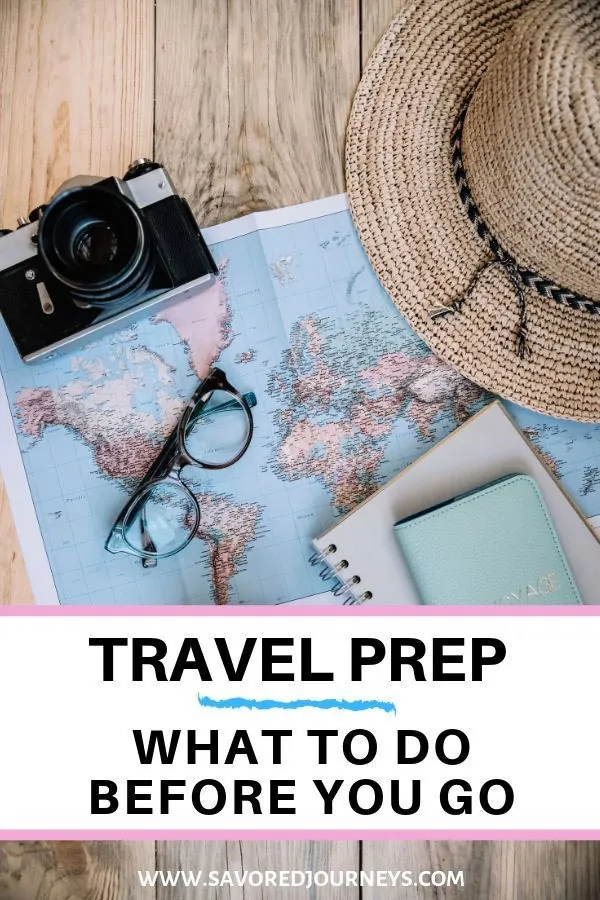
1. Research Your Destination Thoroughly
Preparation begins with knowing where you’re heading. Before booking flights or packing bags, dive deep into research about your destination. Assess its safety conditions, particularly for families, by reviewing travel advisories, understanding local laws, and identifying potential health risks. For instance, are kids’ car seats mandatory for road travel? What vaccinations are required? Additionally, look for family-friendly accommodations that prioritize child safety amenities, such as baby gates or fenced play areas, and activities that cater to younger travelers.
When choosing a destination, prioritize those known for being family-friendly. Popular resorts or destinations often offer facilities like kids’ clubs, babysitting services, and heightened security.
2. Update Vaccinations and Take Health Precautions
Health preparation is vital when traveling with kids. Ensure your child’s routine vaccinations are up-to-date before you leave. If traveling internationally, consult a pediatrician about specific vaccines needed for the region, such as those for yellow fever or typhoid. This is especially crucial when visiting countries with high disease risk or insufficient healthcare facilities.
Ask your doctor about travel medications for motion sickness, altitude adjustments, or gastrointestinal issues. Also, ensure you pack enough prescription medications in case of delays. Familiarizing yourself with how to access healthcare at your destination can be a lifesaver in emergencies.
3. Secure Travel Insurance
Being prepared for the unexpected is essential, and that’s where travel insurance comes in. A comprehensive family travel insurance plan should cover medical emergencies, trip interruptions, and lost belongings. When selecting a policy, check for coverage tailored for children, including medical evacuation, pediatric care, and special travel costs for minors. The peace of mind this provides is well worth the investment.
4. Pack a Safety and Medical Kit
Having a well-stocked safety and medical kit is a must. Your kit should include:
- Basic first aid supplies: bandages, antiseptic wipes, and gauze
- Medications: pain relievers (child-safe), antihistamines, and motion sickness remedies
- Disinfectant wipes and hand sanitizers
- Thermometers and insect repellents
- Childproofing supplies like outlet covers, cabinet locks, and corner guards (especially for younger kids)
Tailor the contents to suit your child’s specific needs and the destination’s environmental challenges. Including items like sunscreen and aloe vera gel, for instance, prepares you for beach vacations.
5. Prepare Kids for Travel Scenarios
Empowering your kids with knowledge can play a big role in ensuring their safety. Before departure, talk to them about potential scenarios they may encounter. Teach them to recognize “safe adults,” such as police officers or security personnel, and stress the importance of staying close to you. Discuss basic safety rules like avoiding strangers, not wandering off, and knowing who to call in emergencies.
Role-playing is an effective teaching method. For example, simulate a situation where your child gets separated from you, and walk them through what to do step-by-step. Equipping them with an understanding of how you’ll handle such incidents gives them confidence and protects them from panic.
Safety During Travel
6. Airport and Airplane Safety Tips
Navigating airports with kids requires heightened awareness. Airports can be crowded and chaotic, making it easy to lose track of little ones. To minimize risk:
- Keep your children within arm’s reach during security checks.
- Use a stroller or harness for toddlers in high-traffic terminals.
- Take a photo of your child each day during travel to have a recent image in case of emergencies.
On airplanes, safety is equally important. Ensure that infants and toddlers are secured in FAA-approved car seats or harnesses. Pack plenty of snacks, toys, and digital entertainment to keep them occupied during the flight and reduce restlessness.
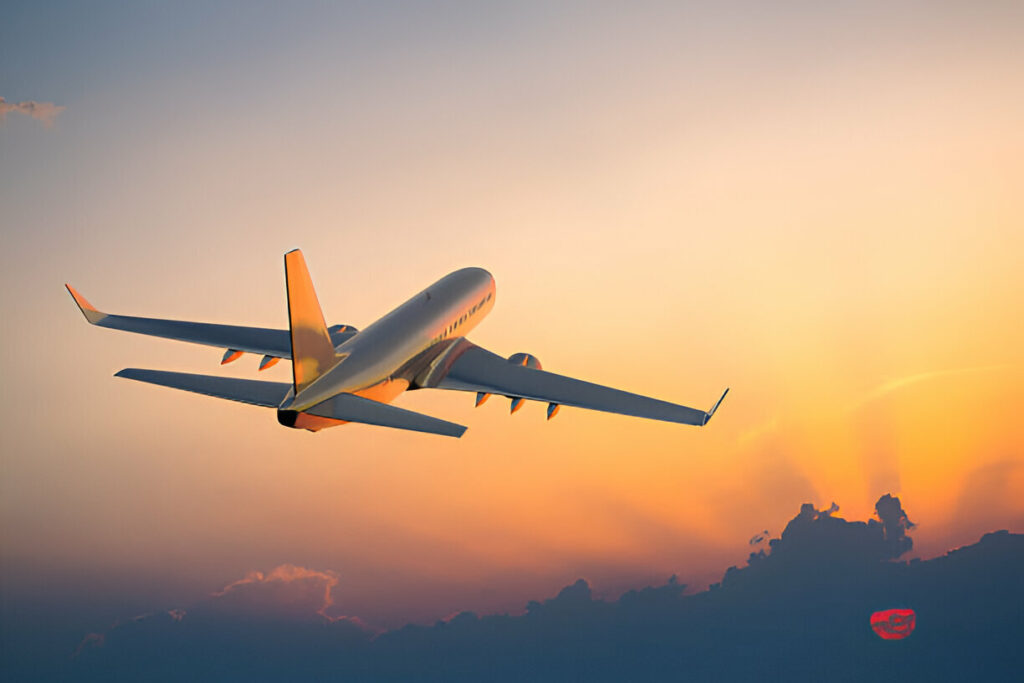
7. Road Trip Safety Tips
Road trips are a popular choice for family vacations but also pose unique safety challenges. Before setting off:
- Verify that your car seats meet regulatory standards and are installed correctly.
- Plan for frequent stops every two hours to allow kids to stretch and stave off irritability.
- Never leave children unattended in vehicles, even for a few minutes, as temperatures can escalate dangerously fast.
Pack an emergency car kit with essentials like flashlights, batteries, water, and non-perishable snacks for unforeseen situations.
8. Train and Public Transport Safety
Traveling by train or buses can be an adventure for kids, but safety precautions are key. Always:
- Keep younger children seated and away from vehicle doors.
- Hold hands with toddlers in crowded stations or vehicles to prevent separations.
- Carry cashless payment options and local metro cards to minimize logistical delays.
For older kids, teach them to stay vigilant about personal belongings and avoid wearing headphones in unfamiliar surroundings.
9. Digital Safety While Traveling
In today’s connected world, digital safety is as crucial as physical safety. Avoid sharing real-time travel details on social media, as this can expose your location to strangers. For tech-savvy kids, equip them with GPS trackers or location-sharing apps on their devices to help you monitor their whereabouts. For younger children without devices, ID bracelets or smart tags with contact information provide a solid layer of protection.
10. Keep Identification on Kids
One of the simplest yet most effective measures is ensuring kids have identification on them at all times. Options include:
- ID bracelets with your contact information
- Temporary tattoos that list your phone number
- Cards tucked into their pockets containing details like your contact info and hotel name
These tools can be invaluable if your child gets lost in a crowd. Teach them how to present this information to authorities if they need assistance.
Accommodation Safety
11. Childproof the Hotel Room
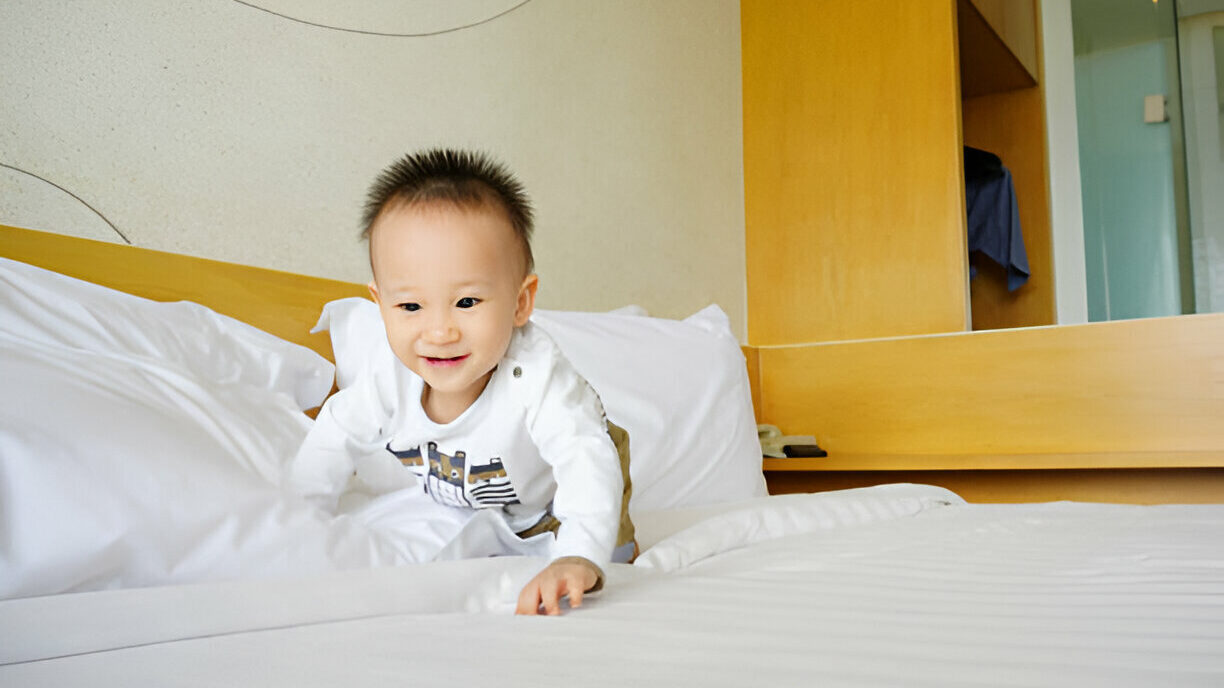
Hotels are not always designed with young children in mind, so it’s essential to take steps to childproof your living space upon arrival. Start by inspecting the room for any hazards:
- Cover exposed electrical outlets.
- Remove small, loose items that could pose choking risks.
- Check for sharp furniture corners and bring corner protectors if needed.
Portable childproofing tools—such as adhesive outlet covers, doorknob locks, and furniture straps—can help transform any hotel room into a safer environment for your child. Additionally, ensure the bathroom is secure by packing anti-slip mats for the tub and keeping toiletries out of reach.
12. Balcony and Window Safety
Balconies and large windows are often a hidden danger, especially for curious toddlers and younger kids. Upon checking into your accommodation:
- Confirm that all balcony doors and locks function properly.
- Ensure furniture is far from railings to prevent kids from climbing.
- Keep windows secured, particularly in high-rise buildings.
Request a ground-floor room or a unit without balconies if these features make you uneasy. It’s always better to err on the side of caution.
13. Store Dangerous Items Safely
Hotel rooms sometimes come with accessible cleaning products, sharp utensils, or fragile décor that can pose risks to children. Upon arrival, quickly go through the room and:
- Lock away items like scissors, knives, and medications in high or closed cabinets.
- Stow away plastic bags that could suffocate young children.
- Remove any fragile or sharp decorative objects from your child’s reach.
Use the safe provided in many hotels to secure smaller items, or bring a portable lockbox for added convenience.
14. Teach Kids Not to Open Doors
Even in the safest accommodations, it’s crucial to explain to your kids that only adults should answer the door. Role-play scenarios where strangers knock and emphasize that they should always alert you first. Use the door’s peephole before answering, and consider keeping the security latch engaged at all times. This ensures your kids understand boundaries and helps maintain your family’s privacy.
Outdoor Activities Safety
15. Water Safety Guidelines
If your vacation involves pools, beaches, or waterparks, water safety becomes paramount. Supervision is non-negotiable—ensure an adult is watching children at all times, even if lifeguards are present. Here are additional precautions to follow:
- Use life jackets for younger children and weak swimmers, even in shallow water.
- Teach kids basic swimming skills and what to do in emergencies.
- Ensure pool areas are gated or have alarms if staying at a rental home.
Additionally, familiarize yourself with local water conditions—strong currents, jellyfish warnings, or contaminated water can pose unexpected hazards.
16. Crowd Navigation Tips
Busy tourist attractions and amusement parks are often overwhelming for kids. To avoid losing sight of them:
- Dress your children in bright colors or matching outfits for easy visibility.
- Establish a meeting point in case of separation and teach your child how to find it.
- Consider using child harnesses for young toddlers in crowded areas.
For older kids, assign a “buddy system” where siblings or partners are responsible for sticking together. Staying connected as a group is critical in chaotic environments.
17. Sun Protection Measures
Long days in the sun can lead to sunburns, heat exhaustion, or dehydration, especially for kids. Protect them with a comprehensive sun-safety plan:
- Apply sunscreen with SPF 30 or higher every two hours.
- Equip them with hats, sunglasses, and lightweight clothing that covers exposed skin.
- Keep them hydrated by offering water regularly, even when they’re not asking for it.
Avoid peak sun hours (10 AM–4 PM) when planning outdoor activities, and opt for shaded areas whenever possible.
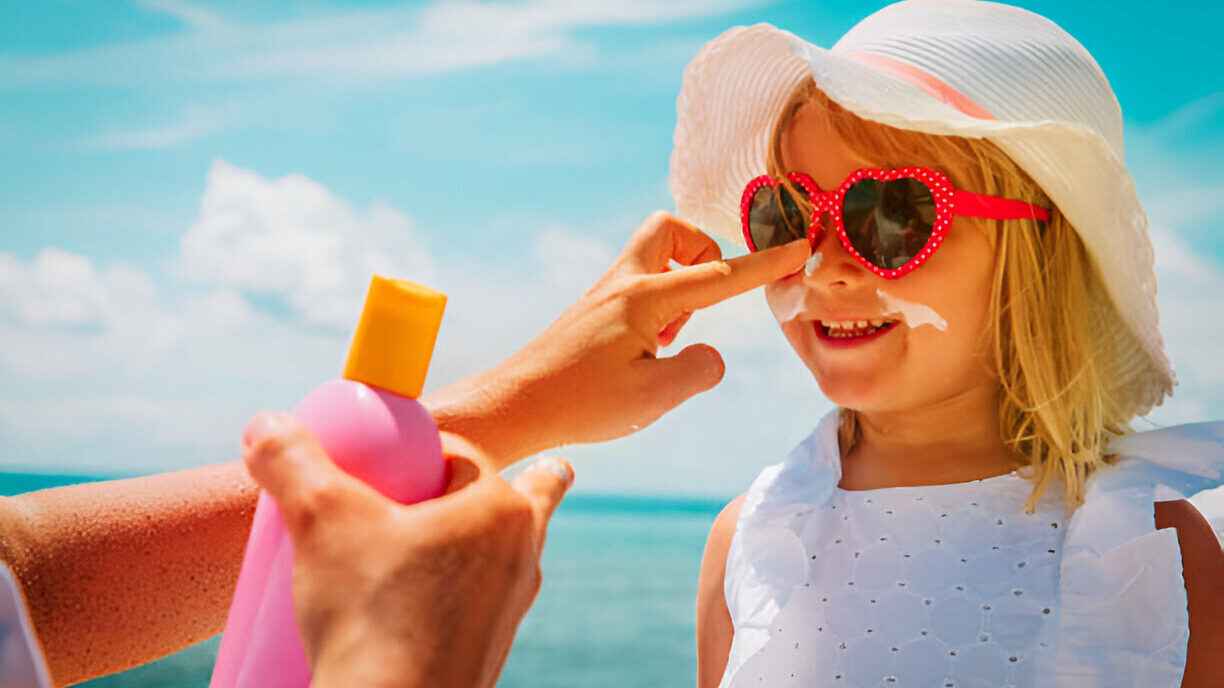
18. Adventure Activity Precautions
Many family vacations involve thrilling adventures like hiking, zip-lining, or boating. While these experiences can create unforgettable memories, safety should always come first:
- Verify that the activity is age-appropriate for your child.
- Use safety equipment such as helmets, harnesses, or life jackets provided by licensed operators.
- Research the reputation and safety protocols of tour companies in advance.
Encourage your kids to speak up about discomfort or fears during activities to prevent accidents caused by hesitation.
General Travel Tips for Keeping Kids Safe
19. Maintain Hygiene Practices
Travel often exposes families to unfamiliar germs, increasing the risk of illness. Instill strong hygiene habits by:
- Washing hands frequently with soap and water.
- Carrying hand sanitizers and disinfectant wipes for times when soap isn’t available.
- Encouraging kids to avoid touching their faces and to use tissues when sneezing.
Also, educate your children about staying away from street food unless it’s from a reliable source, and only drink bottled or boiled water in areas where contamination is a concern.
20. Keep Kids Occupied During Downtime
Unoccupied kids can easily find themselves in risky situations, so having activities on hand to distract them is key. Bring:
- Books or e-readers tailored to their interests.
- Portable puzzles, travel-sized board games, or art supplies.
- Devices loaded with games, movies, or educational apps (along with headphones).
Interactive games like I Spy, scavenger hunts, or sightseeing-themed challenges can also keep kids engaged while enhancing their vacation experience.
21. Stay Calm and Communicate Openly
Travel comes with unpredictable moments, from delayed flights to changes in plans. Modeling calmness during these instances teaches your children to remain composed under stress. Keep communication open, encouraging them to express both their excitement and any anxieties they may feel.
Use positive reinforcement throughout the trip, praising them for following safety protocols or handling challenges maturely. This not only reassures your kids but also strengthens family bonds during your travels.
FAQs: Answering Common Concerns About Keeping Kids Safe on Vacation
What should I do if my child gets lost?
If your child gets separated, teach them to approach someone in uniform—like a security guard or police officer—or to stay at a pre-designated meeting point. Make sure they know your contact number and hotel address.
How can I keep my toddler safe in a hotel room?
Childproof the room by using tools like outlet covers, securing cords, and creating barriers for unsafe areas like balconies or sharp furniture edges.
What are the best ways to prevent illness while traveling?
Promote good hygiene with frequent handwashing, eating from hygienic sources, and drinking safe water. Carry a medical kit that includes essentials like fever reducers and anti-diarrheal medications.
How can I ensure car seat safety abroad?
Research local car seat regulations and bring your own car seat if necessary. Many rental car companies allow you to request a car seat in advance.
What should I pack for emergencies?
Include a well-stocked first-aid kit, important medications, backup clothing, your child’s identification, and a list of emergency contacts.
Conclusion: Enjoying a Safe Family Vacation Together

Keeping your kids safe while traveling is a delicate balance of preparation, vigilance, and flexibility. By thoroughly researching your destination, packing smartly, and staying mindful of potential risks during activities, you can create a secure environment for your family to explore. Remember, open communication within the family will make children feel confident and secure as they navigate unfamiliar places.
While safety is critical, don’t lose sight of the main goal: to have fun and create cherished memories. With these 21 tips, you can truly relax and enjoy your time together, knowing you’ve taken every possible precaution to keep your loved ones safe. So, pack your bags, plan ahead, and embark on your next family adventure with confidence!
